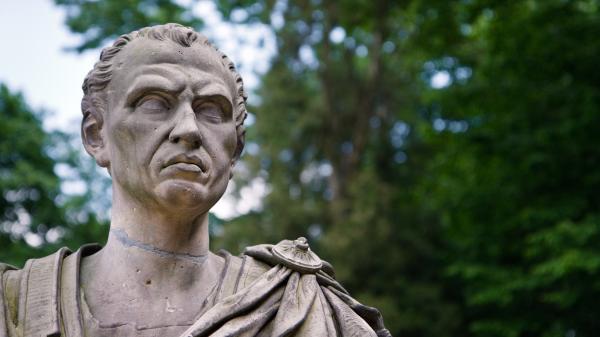The Julian Calendar
The Julian calendar was introduced by Julius Caesar in 45 BCE and replaced the Roman calendar.

Roman general Julius Caesar.
©bigstockphoto.com
Replaced Lunar Calendar
The Julian calendar's predecessor, the Roman calendar, was a very complicated lunar calendar, based on the moon phases. It required a group of people to decide when days should be added or removed in order to keep the calendar in sync with the astronomical seasons, marked by equinoxes and solstices.
First Solar Calendar
In order to create a more standardized calendar, Julius Caesar consulted an Alexandrian astronomer named Sosigenes and created a more regulated civil calendar, a solar calendar based entirely on Earth's revolutions around the Sun, also called a tropical year. It takes our planet on average, approximately 365 days, 5 hours, 48 minutes and 45 seconds (365.242189 days) to complete one full orbit around the Sun.
Why did humans invent calendars?
Introducing Leap Years
A common year in the Julian calendar has 365 days divided into 12 months.
In the Julian calendar, every four years is a leap year, with a leap day added to the month of February.
At the time, February was the last month of the year, and Leap Day was February 24.
However, leap years were not observed in the first years after the reform due to a counting error. In the first years of the Julian calendar’s existence – until 12 Common Era (CE) – every third year was a leap year due to a calculation error.
Too Many Leap Days
The Julian calendar's formula to calculate leap years produced a leap year every four years. This is way too often, and eventually the Julian calendar and important religious holidays, like Easter were several days out of sync with the fixed dates for astronomical events like equinoxes and solstices.
Realigned With the Sun
The introduction of the Gregorian calendar allowed for the realignment with events like the Vernal equinox and Winter solstice.
The solution to this error was to replace the Julian calendar with the Gregorian calendar in 1582.
Why are several days missing in 1752?
The Julian Calendar in Modern Society
Although the Gregorian calendar has become the international civil calendar, the Julian calendar was still used by some countries into the early 1900s. Some Orthodox churches still use it today to calculate the dates of moveable feasts, such as the Orthodox Church in Russia. Others who still use the Julian calendar include the Berber people of North Africa and on Mount Athos.
The calendar was used throughout the Roman Empire and by various Christian churches.
The Julian Calendar delays Easter up to 35 days
The Julian Period for Astronomers
The Julian period or the Julian Day system provides astronomers with a single system of dates that could be used when working with different calendars to align different historical chronologies. It assigns a Julian Day (JD) to every year without having to worry about B.C.E or C.E. It was invented by French Scholar Joseph Justus Scaliger in 1583, who proposed that the Julian Period starts at noon on January 1, 4713 B.C.E. (Julian calendar) and lasts for 7980 years. This was determined because it is a time period long enough to include all of recorded history and includes some time in the future that would incorporate the three important calendrical cycles, the Golden Number Cycle, the Solar Cycle, and the Roman Indiction.
The Golden Number Cycle is a cycle of 19 years, while the Solar Cycle is a cycle of 28 years and the Roman Indiction repeats every 15 years. Thus the Julian Period is calculated to be 7980 years long or 2,914,695 days because 19*28*15 = 7980.